- Botanical Description
- Chemical Composition
- Therapeutic Properties
- Procurement
- Methods of Application
- Precautions
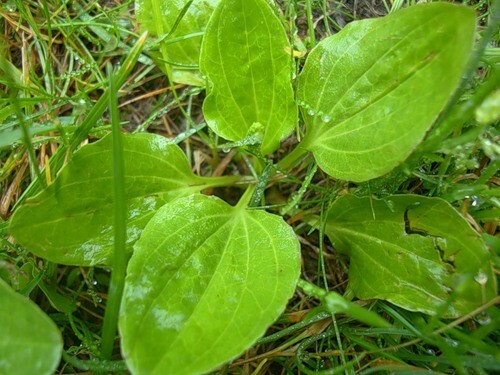
The largest medicinal value is the leaves. Avicenna recommended using them to stop bleeding caused by tumors, ulcers, as well as inflammation of the eyes, kidney, liver and elephantiasis. They found application not only in folk medicine, but also in cooking and cosmetology. Knowing all the medicinal properties and contraindications of plantain leaves, you can safely use them for many diseases. The plant has a number of interesting folk names. For example, seven-passenger companion, rannik, grandmother, chirch grass, cutter, roadside.
Botanical Description
Plantain large refers to perennial plants. To meet him in temperate zones can almost everywhere: on the paths, roadsides, vacant lots, near residential houses of settlements, in the countryside, in the gardens, gardens, forests, fields and meadows, along the banks of reservoirs. The plant is unpretentious, growing even on compacted dry soil. In natural conditions, reproduction is carried out by self-sowing, but there are also special cultivation zones where it is grown to obtain medicinal raw materials.
Interestingly: Propagation of plantain is carried out by seeds that swell and emit mucus in wet weather or during rain, after which they easily stick to the soles of shoes, wheels of cars, wool and paws of animals, bird feathers and in this way are carried over long distances and spread everywhere,where people live. This feature of the plant is clearly reflected in its name.
The root system consists of a shortened main root with a bundle extending in the form of a brush, the accessory roots, which deepen into the soil to a depth of 20 cm or more.
Aboveground part of the plant includes a rooted leaf rosette and leafless ascending flower-bearing arrows up to 50 cm long. Leaves large, broadly ovate, all-edged, with long petioles. The length of the leaf blade is up to 20 cm, width is up to 10 cm. The top sheet is smooth, glossy, and has well-defined arched veins in the amount of 3 to 9. The presence of such veins prevents the breakage of the leaves and makes them resistant to trampling. In order to save moisture, the leaves are usually located directly on the ground, but in case of excess, they rise upwards to allow evaporation.
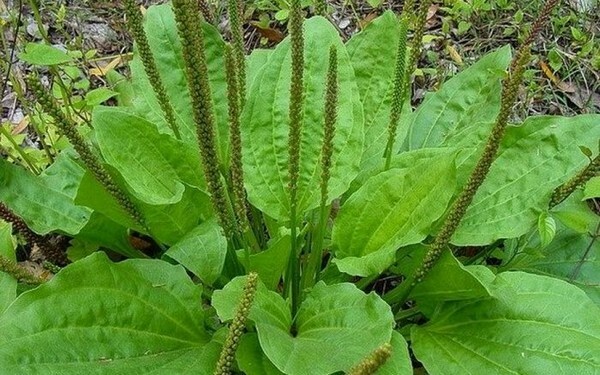
Flowering of the plant lasts from May to early autumn. Flowers are bisexual, sessile, small and unattractive, brown, forming a dense cylindrical spike inflorescence at the end of the flowering arrows. Calyx four-membered with sepals at the base sepals, corolla tubular of 4 lobes.
Fruits begin to ripen in August. They are two-cavity boxes containing from 8 to 34 small angular seeds of brown color.
Chemical composition of
The plantain leaves contain many useful compounds, which cause them to have a wide range of medicinal properties. Among them:
- polysaccharides;
- mucus;
- glycosides( aucubine, plantagin, etc.);
- tanning agents;
- vitamins and vitamin-like substances( provitamin A, ascorbic acid, phylloquinone and choline);
- flavonoids;
- bitterness;
- phytosterols;
- saponins;
- organic acids;
- phytoncides;
- minerals( calcium, potassium, magnesium, barium, boron, copper, bromine).
The healing properties of
What are the leaves of plantain treated for? Plantain can be considered a universal medicinal plant, as it helps with many pathologies, from a simple cut on the skin and ending with tumor formations in the body. Means based on plant leaves, in addition to toning and restorative effects on the whole body, have the following healing properties:
- accelerates the stopping of bleeding;
- have an enveloping and expectorant effect;
- relieves pain and inflammation;
- promotes wound healing;
- have bacteriostatic activity;
- increase the secretory function of the digestive system;
- relieve spasms;
- have a diuretic effect;
- reduce blood cholesterol;
- have anti-allergic effect.
Fresh and dry leaves of the plant in the form of applications are very effective for the treatment of purulent wounds, ulcers, burns, cuts and boils on the skin. Means on their basis help to get rid of a rash, eels and lichens. Fresh juice of the plant promotes the rapid cleaning of wounds from pus and prevents the propagation of pathogenic bacteria on the wound surface, accelerates regeneration processes, removes inflammation, improves the maturation of granulation tissue. It is indispensable for long-term healing wounds and as a first aid for trauma.
It is externally decoction of plantain leaves in the form of rinses used for toothache, periodontitis and inflammatory processes on the eye mucosa and in the oral cavity.
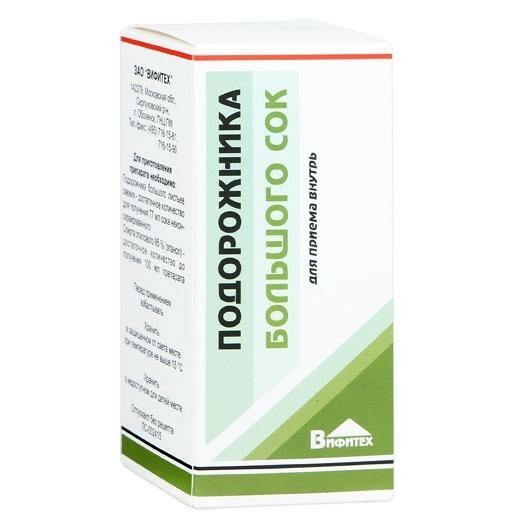
Ingestion of infusions, syrups and decoctions from the leaves of the plant is an effective tool in ARI and to prevent the development against their background of bacterial complications. They help to get rid of debilitating coughing with bronchitis, cause sputum liquefaction, increase the secretion of mucus in the bronchi, have an enveloping and softening effect. Can be used in the complex treatment of diseases such as tuberculosis, pleurisy, whooping cough and bronchial asthma.
It is interesting: Leaves of plantain have found application in cosmetology. Based on their infusion, masks and rinses are used to care for dry scalp and hair, cleansers for dry and oily, prone to frequent acne, skin, baths, creams and lotions for the skin of hands and feet.
Used psyllium for diseases of the urogenital system of inflammatory nature, chronic nephritis, polyuria, enuresis. Due to the hypotensive effect, it prevents the appearance and helps to eliminate swelling caused by cardiovascular pathologies. Effective plantain in the treatment of certain female diseases: with inflammation of the ovaries, endometrium and the parameter. It helps with female infertility, caused by violation of the menstrual cycle and ovarian function, and in male infertility, caused by a decreased activity of spermatozoa.
Leaves of plantain also have a sedative effect, are used for mild forms of neurosis, insomnia and irritability.
Fresh carefully washed young leaves of plantain can be eaten. They are added to vegetable salads, cereals, soups, casseroles, omelets, drinks. Such dishes are especially useful for people suffering from hypoacid or anacid gastritis, peptic ulcer, meteorism, enteritis and colitis, gallbladder disease.
Procurement of raw materials
For medicinal purposes leaves of plantain large should be harvested during the flowering period. It is better to do this after the rain, waiting for their complete drying, as excess moisture will slow down the drying process, which can lead to darkening of the leaves. With the help of scissors or pruning shears are cut at a height of about 4 cm from the ground level. In this case, only whole leaves of green are selected without any damage. Drying is carried out in the attic, outdoors under a canopy or in a dryer at a temperature of not more than 50 ° C.
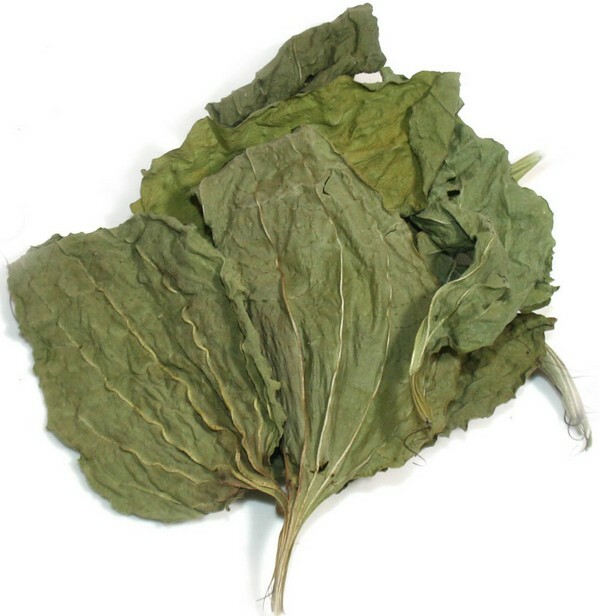
Freshly picked and dried raw materials are characterized by a mild odor and a weak bitter astringent taste. Dry leaves of plantain should be stored for no more than 2 years in cardboard packages or wooden boxes.
Recommendation: Plantain leaves should be harvested in ecologically clean areas, away from trails, industrial plants and places for dogs and other animals, as the plant easily adsorbs the surrounding toxins and harmful substances.
Methods of application
Treatment of plantain leaves of various diseases can be carried out both independently prepared by means, and already ready-made chemist's preparations. The latter include Plantaglucid granules, plantain juice, pectoral No. 2, plantain of large leaves in the form of filter bags and crushed dry plant raw materials.
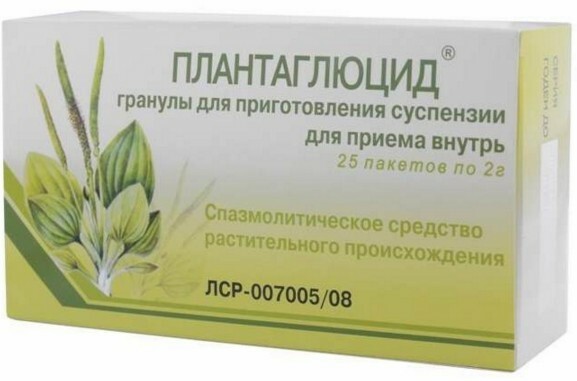
Important: The preparations based on the leaves of plantain should be taken 20 to 30 minutes before meals.
Treatment of cough and inflammation in the airway
To treat a cough against the background of bronchitis and inflammation of the respiratory tract apply fresh and dry leaves of plantain. In the first case, 3 tbsp.l.fresh leaves thoroughly crushed, pour a glass of water, put the composition on the gas and allow to boil. Then add 100 g of natural honey and mix the mass until smooth. Take 1 tsp.every hour until relief.
Of the dried leaves, prepare tea at a rate of 2 - 3 tsp.raw materials for 200 ml of boiling water. To insist such tea follows 15 minutes, and to drink on 1 glass up to 4 times a day, adding for improvement of taste and strengthening of useful properties of a drink 1 tsp.honey.
In case of inflammation of the mucous membranes of the respiratory tract, the following prescription is recommended. Leaves of plantain( 1.5 g) pour a liter of steep boiling water, stand the mixture on low heat for 10 minutes. Cover and insist for 24 hours. Filter and take 20 ml three times a day.
Treatment of abscesses, wounds, ulcers, burns, insect bites, bruises
For the treatment of ulcers, it is effective to apply ointment made from 10 g powdered dry leaves of plantain and 90 g of butter or pork fat to the affected areas.
A good remedy for insect bites is the smearing with fresh juice from the leaves of the plant. It helps relieve pain and an unpleasant burning sensation.
For the early healing of burns, wounds, ulcers, abscesses, boils, fresh leaves of the plant are used. In a washed and lightly mashed form so that they let the juice, they are layered in several layers on the damaged areas, and then fixed with a bandage or a mesh bandage. After 2 - 3 hours, the leaves are replaced with new ones.
Treatment of diseases of the digestive tract
When inflammation of the intestinal mucosa( colitis, enterocolitis, enteritis), gastric bleeding, peptic ulcer, chronic hypoacid gastritis 1 tbsp.l.dry leaves pour the plants with a glass of boiling water, insist under a closed lid for 15 minutes and filter. Take 20 ml 3 - 4 times a day. In the treatment of these diseases, freshly squeezed juice from the leaves will also help. Take it for these purposes for 1 tbsp.l.three times a day.
If a regular stool and a tendency to constipation is disturbed, powder from dried leaves helps, which is taken in small amounts, washed down with water.
Precautions
Plantain leaves, like most medicinal plants, have some contraindications for use in medicinal purposes. This applies, above all, to the internal reception of funds on its basis. They can not be consumed by people in case of allergy to a plant with hyperacid gastritis and having ulcers in the gastrointestinal tract in the phase of exacerbation, with increased blood clotting, the presence of thrombi or even just a tendency to their formation.
Important: To get a good result from treatment and not to harm the body, you must first consult a physician or a specialist in phytotherapy, which will take into account not only the medicinal properties, but also the contraindications of plantain leaves, as well as the individual characteristics of the organism.
Therapeutic properties and recipes for the use of plantain large:
